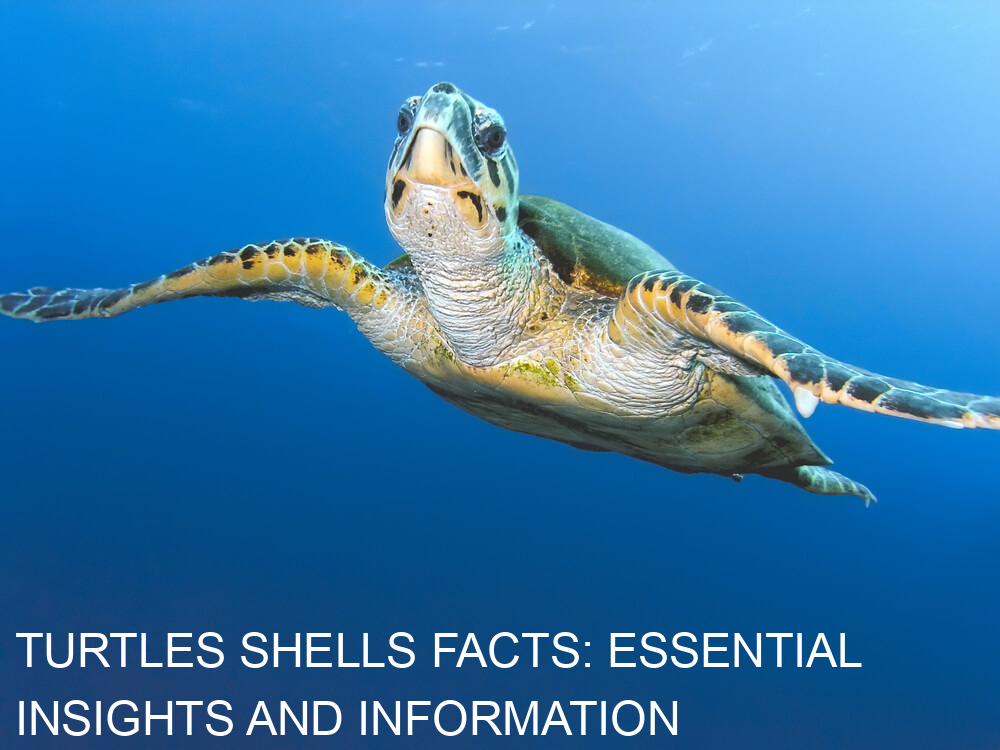Turtle shells are a fascinating aspect of these ancient reptiles, serving as both a protective shield and a biological marvel.
Composed of modified bony elements, such as ribs and parts of the pelvis, the turtle shell comes in various types and forms depending on the species.
Turtles shells facts are the shell itself is divided into two main parts – the top (carapace) and the bottom (plastron) – which envelop all the vital organs of the animal.
Beyond protection, turtle shells also play a role in camouflage, helping these creatures blend seamlessly with their environment. The shell’s outer surface is covered in keratin-based scales, similar to that found in hair, horns, and claws in other animals.
As turtles grow, their shells grow with them, making them an integral part of their anatomy throughout their lifespan.
Understanding the intricacies of the turtle shell can help shed light on their unique biology, evolution, and conservation needs in a rapidly changing world.
Key Takeaways
- Turtle shells provide protection and camouflage for these ancient creatures
- The shell consists of a top (carapace) and bottom (plastron), made of modified bony elements
- Turtle shells can offer insight into their unique biology, evolution, and conservation needs
Turtles Shells Facts
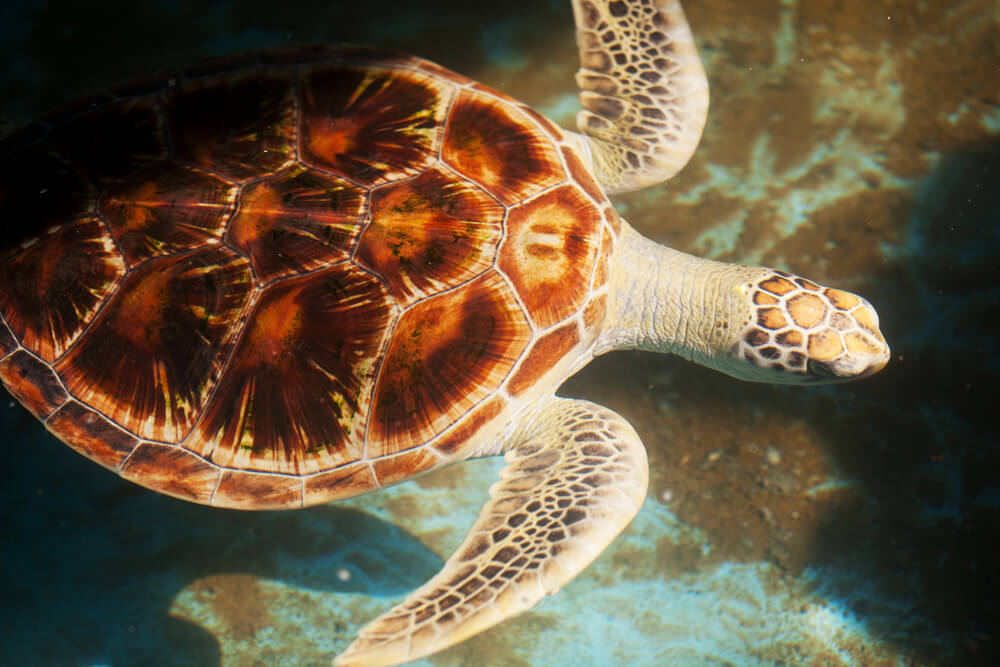
Turtles are unique creatures with a hard shell that covers their body.
Understanding the anatomy of a turtle shell requires a closer look at the two main components: the carapace and the plastron.
The Carapace
The carapace is the top part of the turtle shell. It is made up of about 50 fused bones, including the ribs and vertebrae. These bones are covered in a layer of keratin, which provides the shell’s scutes – the distinctive plates that you see on the surface.
The carapace acts as a shield, protecting the turtle from predators, environmental threats, and physical trauma. It also plays a role in maintaining the turtle’s body temperature, allowing them to regulate their warmth by basking in the sun or seeking shade when necessary.
The Plastron
On the other hand, the plastron is the bottom part of the turtle shell. It is formed by the fusion of bones, including the clavicles (collarbones) and other elements from the pelvic area.
The plastron connects to the carapace along each side of the turtle’s body, creating a rigid skeletal box that encloses their vital organs.
The plastron provides additional protection for the turtle’s soft underbelly. It also offers support for their internal organs and helps to distribute their weight evenly across their body.
Just like the carapace, the plastron is covered in scutes made of keratin, offering a durable and resilient surface.
Overall, the turtle shell is an essential and impressive feature of these fascinating reptiles. Its complex anatomy and function ensure the turtle’s survival in a diverse range of habitats and environments.
Function and Purpose of the Turtle Shell
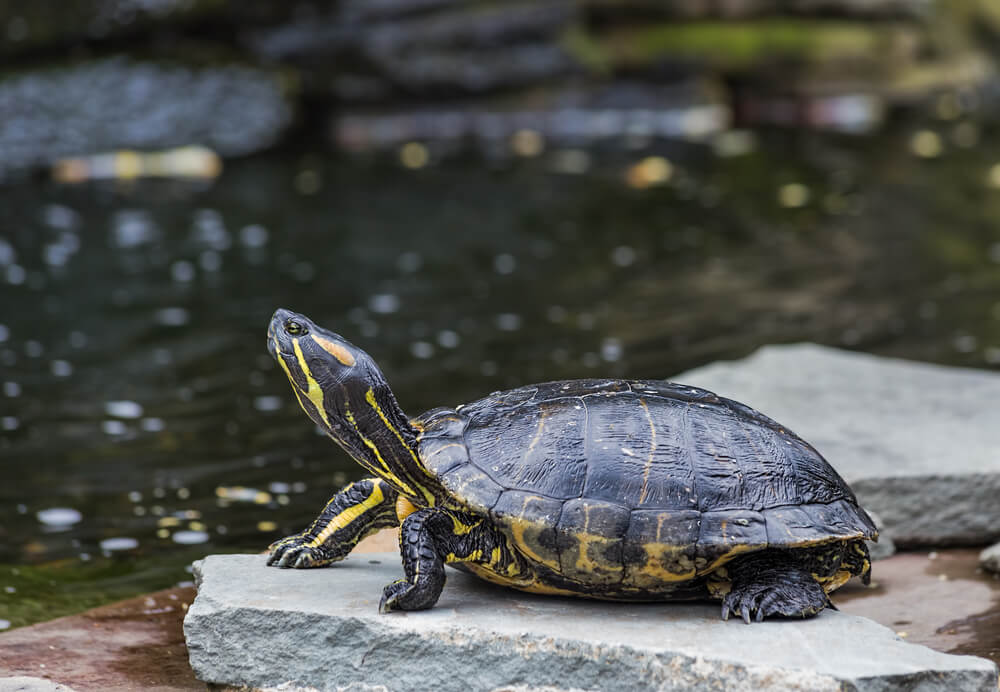
Protection
The turtle shell serves as a shield for the ventral and dorsal parts of the turtle’s body, enclosing its vital organs and sometimes even its head.
It is made of modified bony elements, such as ribs, pelvis, and other bones found in most reptiles. With this natural armor, the turtle can protect itself from potential predators and harsh elements.
Locomotion
In addition to providing protection, the turtle shell also plays a role in locomotion. The shell’s shape and its distribution of mass affect the turtle’s balance and center of gravity.
This, in turn, impacts the turtle’s swimming and walking abilities. The streamlined design of a turtle shell helps them glide through the water with ease, while terrestrial turtles may have a more domed shape to assist them on land.
Ultimately, the turtle shell offers an optimal balance between protection and mobility.
Thermoregulation
The turtle’s shell also contributes to thermoregulation, allowing it to regulate its body temperature. The shell can absorb and store heat from sunlight, helping turtles maintain their body heat in cooler environments.
Additionally, the shell’s color can influence the turtle’s ability to absorb or reflect sunlight, with darker shells resulting in better heat absorption.
By effectively controlling its body temperature, the turtle ensures its vital processes function optimally, contributing to its overall survival and adaptation to different habitats.
Types of Turtle Shells
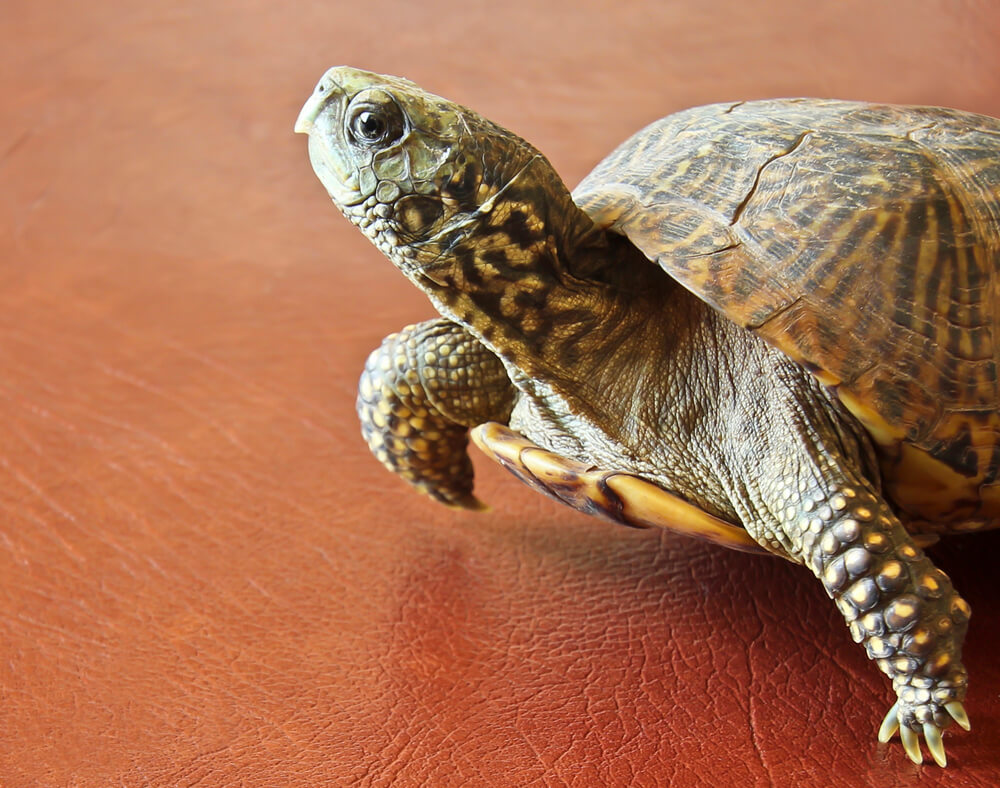
Turtle shells serve as a protective shield for these fascinating reptiles, and their unique designs have intrigued both scientists and enthusiasts.
In this section, you’ll learn about the different types of turtle shells, their features, and their functions.
First, let’s look at the two main categories of turtles: Cryptodires and Pleurodires. Cryptodires, also known as hidden-neck turtles, retract their heads straight back into their shells.
Pleurodires, or side-neck turtles, pull their heads into the shell by bending their necks sideways. These categories help define the general structure of their shells.
Turtle shells are made up of two main parts: the carapace and the plastron. The carapace is the dorsal (top) part of the shell, and it’s formed from modified ribs and vertebrae fused together.
On the other hand, the plastron is the ventral (bottom) part, and it’s made of modified parts of the turtle’s pelvis and other bones. These bony parts are covered by a layer of keratin called scutes, which give the shell its distinct appearance.
There are various types of turtle shells based on their shapes and structures:
- Dome-shaped shells: These shells are typical of tortoises and some terrestrial turtles. They are characterized by their high, rounded shape and provide excellent protection against predators.
- Streamlined shells: These shells are common in aquatic or semi-aquatic turtles, such as the painted turtle. They have a flatter and more streamlined shape, allowing for better swimming and diving abilities.
- Ridge-backed shells: Some turtles, like the common snapping turtle, have shells with a prominent central ridge running along the carapace. This ridge adds strength to the shell and can be used to deter predators.
- Soft-shells: Unlike most hard-shells, soft-shell turtles have a flexible carapace covered with skin rather than scutes. Soft shells can better absorb impacts and are more agile in the water. Examples include the spiny soft-shell turtle and the leatherback sea turtle.
Each shell type has adapted to its specific environment and lifestyle, providing optimal protection and mobility to the turtle.
As you explore the fascinating world of turtles, you’ll discover the incredible diversity and the functional beauty hidden in their shells.
Differences Among Species
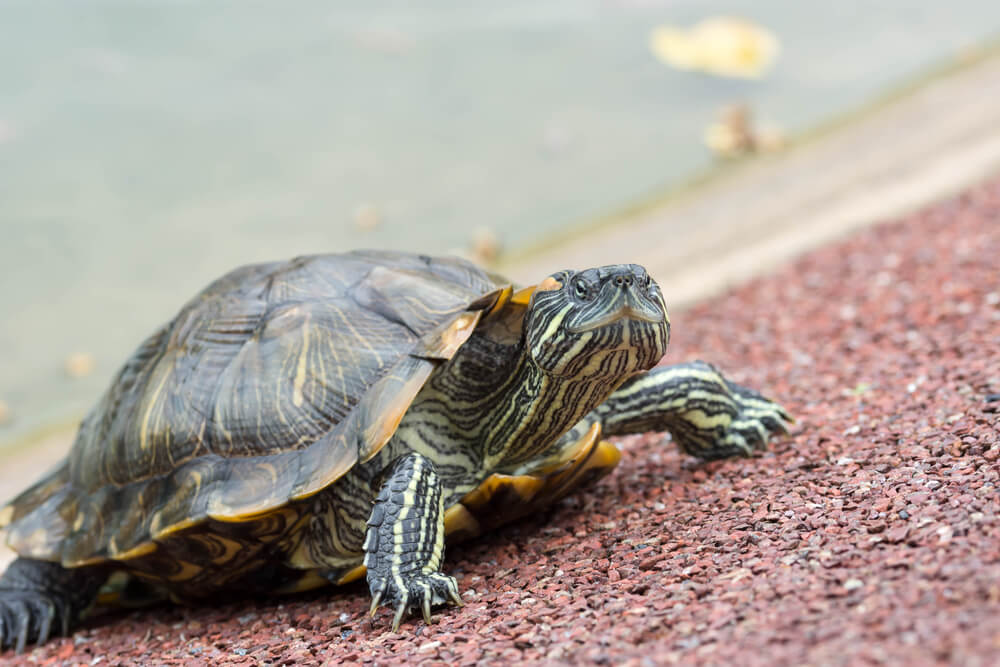
While all turtle shells serve the primary purpose of offering protection, there are noticeable differences among species. The shell is composed of two main parts: the carapace, which forms the top, and the plastron, covering the bottom.
Despite these commonalities, variations exist in shell shape, size, and color, highlighting the adaptations and unique traits of each species.
For instance, the Green Sea Turtle possesses a streamlined shell, perfect for its marine habitat, allowing it to glide effortlessly through the water.
Similarly, the Leatherback Sea Turtle features a unique, leathery shell rather than the more common bony shell found among other species. This flexibility helps the Leatherback maintain a faster swimming speed in open ocean environments.
On the other hand, Terrapins – which reside in both water and land habitats – display a flatter shell to accommodate their semi-aquatic lifestyle. The Box Turtles, known for their terrestrial habits, exhibit a more dome-shaped shell.
Additionally, the highly-dome-shaped carapace of the Galápagos Tortoise not only provides it with a strong defense from predators but also aids in conserving body heat, essential for survival in its high-altitude habitat.
The coloration of shells also varies, often providing effective camouflage. Some turtles, like the Red-eared Slider, exhibit intricate patterns and bold colors on their shells, blending seamlessly into their surroundings.
In contrast, certain sea turtles like the Hawksbill Turtle possess counter-shading, with dark-colored carapaces and lighter plastrons, shielding them from both aerial and underwater predators.
In conclusion, the differences among turtle shells are a testament to their adaptability and resilience in various environments.
From marine to terrestrial habitats, these remarkable animals have evolved unique shell characteristics to ensure their survival and success in the animal kingdom.
Evolution of the Turtle Shell
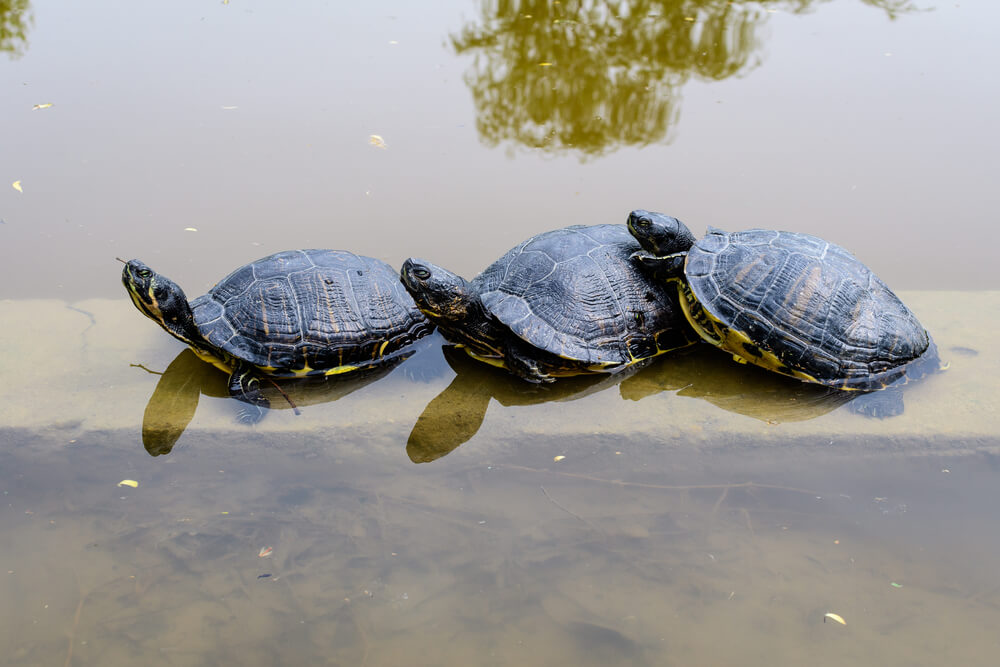
Turtle shells have a unique and fascinating evolutionary history that spans millions of years.
The earliest known turtles date back to the Late Permian Epoch, around 298.9 million to 251.9 million years ago, when ancestral forms possessed teeth, unlike today’s toothless turtles.
In the course of their evolution, turtle shells have developed from bony scales called osteoderms.
Unlike crocodiles, where osteoderms form within their skin, turtles’ ribs and vertebrae expand into the outer skin layers and connect together, forming a solid shell.
Structure of the Turtle Shell: The turtle shell consists of two parts:
- Carapace: The upper, dome-shaped section that protects the turtle’s back.
- Plastron: The lower, flat section that covers the turtle’s belly.
You might be surprised to learn that turtle shells didn’t initially evolve as natural armor. Instead, early reptilian ancestors of turtles might have developed partial shells to aid them in burrowing.
This adaptation later provided the added benefit of protection as the shell’s structure became more robust over time.
As you delve deeper into the evolution of the turtle shell, you’ll come to appreciate how these remarkable animals have not only stood the test of time but also adapted remarkably well to their environments through changes in their shell’s structure and function.
Health and Disease of Turtle Shells

Turtle shells are an essential part of their anatomy and serve as a protective organ. Nevertheless, they can also become susceptible to various diseases and health issues.
In this section, we’ll discuss some common diseases of turtle shells and how you can help maintain your turtle’s shell health.
Metabolic Bone Disease is one health problem that can affect turtle shells. This condition is typically the result of insufficient calcium or imbalanced nutrition in a turtle’s diet.
When a turtle suffers from this disease, you might notice deformations on the shell, such as the rear part of the carapace being pulled downward and the marginal scutes pulled upward.
In tortoises, the condition could lead to the development of pyramid-shaped scutes. It is crucial to consult a veterinarian if you suspect your turtle has metabolic bone disease, as it can be fatal.
Shell Rot is another common turtle shell disease that is caused by bacterial, fungal, or parasitic infections. This condition usually results from living in poor-quality water or an unclean habitat.
Signs of shell rot might include discoloration, indentations, or emitting a foul smell. To prevent shell rot, ensure your turtle’s living environment is clean and well-maintained.
Turtles can also develop abscesses, which often occur in their ears and appear as large swellings on the sides of the head, just behind the eyes.
Vitamin A deficiency is commonly linked to abscesses in turtles. A vet should be consulted for treatment and a review of your turtle’s diet if you notice an abscess on your pet.
To maintain a healthy shell, follow these recommendations:
- Provide a well-balanced and nutritious diet, including appropriate calcium and vitamin sources.
- Clean and maintain your turtle’s living environment regularly, ensuring it has access to clean water.
- Regularly inspect your turtle’s shell for any signs of discoloration, deformation, or damage.
- Consult a vet for any concerns regarding your turtle’s shell health or overall well-being.
By staying vigilant and informed about potential turtle shell issues, you can ensure a healthy environment and long life for your pet.
Human Impact and Conservation
As a lover of sea turtles, it is crucial for you to understand the threats these creatures face and how to contribute to their conservation. Human activities have a profound impact on sea turtle populations, causing significant declines.
One major threat to sea turtles is fisheries bycatch, which occurs when turtles are accidentally caught in fishing gear.
This is considered the greatest danger to their populations, with millions of sea turtles having been accidentally captured since 1990.
Other dangers include plastic pollution, oil spills, and chemical runoff, which can contaminate their habitats and disrupt their natural behaviors.
To help protect sea turtles, supporting conservation efforts is essential. Many organizations, like the Oceanic Society, run programs to monitor and protect these magnificent creatures.
You can also take steps in your everyday life to reduce threats to sea turtles. For example, reduce single-use plastics, dispose of waste responsibly, and support sustainable fishing practices.
Finally, staying informed about sea turtles and sharing their stories with those around you can positively impact their future.
By understanding the threats they face and encouraging others to take action, you can play your part in protecting these ancient reptiles and preserving their place in our oceans.
Frequently Asked Questions
What is the main purpose of turtle shells?
The main purpose of a turtle shell is to protect the turtle’s vital organs, as it completely encloses them and even the head in some cases. Also, the turtle shell is made up of about 60 bones, more than half of all the bones in its body, making it a vital part of its anatomy.
The shell is fused to the rib cage and the spinal column, ensuring that it remains secure throughout the turtle’s life (TheCritterCove).
How do turtle shell patterns differ among species?
Shell patterns can vary greatly among different turtle species. The patterns and colors of the turtle’s shell can impact their survival, helping them blend into their natural environments.
Some turtles have solid-colored shells, while others may have intricate designs and different shades. For example, the matamata turtle has a rough, knobby shell that blends in with its surroundings.
In contrast, the painted turtle has brightly colored markings on its shell that can help deter potential predators.
What is the internal structure of a turtle shell?
The internal structure of a turtle shell is a complex combination of both skeletal and dermal bones. It is primarily made up of modified bony elements such as the ribs, parts of the pelvis, and other bones found in most reptiles.
The shell consists of two parts: the carapace (the upper shell) and the plastron (the lower shell), connected by a bridge.
How does a turtle’s shell grow?
As turtles grow, their shells grow with them. The turtle shell is made up of plates called scutes, which are composed of keratin, the same material found in human nails and hair.
The scutes shed and are replaced by new ones as the turtle grows, allowing the shell to expand and accommodate the turtle’s increasing size.
Are sea turtle shells different from other turtles?
Sea turtle shells differ from those of other turtles in several ways. They have a more streamlined and flattened shape to help them glide through the water more efficiently.
Also, sea turtles lack hinged plastrons found in some land turtles, which makes their shells more rigid and better suited for the aquatic lifestyle.
Another difference is the lack of scutes in some sea turtles, like the leatherback, which instead have a leathery covering on their shells.
What is the significance of a turtle shell in various cultures?
Turtle shells hold significant symbolism in many cultures around the world. In Native American mythology, the turtle represents wisdom, endurance, and protection as it carries its home on its back.
It is also seen as a symbol of the Earth, as many creation stories involve a turtle helping to form the world. In Chinese culture, the turtle is a revered symbol of longevity and wisdom, often featured in art and folklore.

